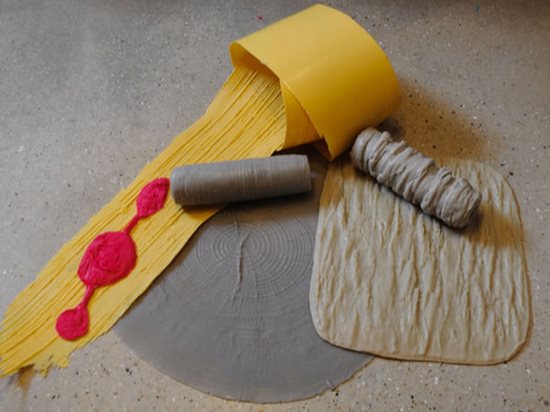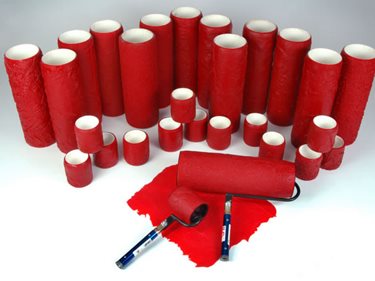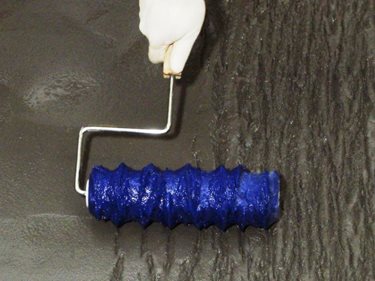Vertical Concrete Stamps & Carving Tools
Tips for buying and using the essentials for vertical stamping and carvingOne of most exciting growth markets in decorative concrete is vertical stamping. This new market niche combines many of the aspects of horizontal concrete stamping with new material technology, specialty tools and artistic techniques, permitting contractors to create vertical rock, wood and stone formations that are unique and extremely realistic.
“There are three products required for a successful vertical stamping application,” says Nathan Giffin, owner of Vertical Artisans, Hickory Hills, Ill. Those include specialty vertical concrete mixes, tools for texturing and carving, and colors to make the finished product look realistic.
Of course, some artistic ability also helps. Giffin says that the industry has some distinct application methods. Some installers use a more production-oriented process and imprint the material with vertical stamps. Others prefer freehand carving to produce greater detail and realism. Both are viable options, with each producing a unique look. The current trend, according to Giffin, involves a bit of a hybrid approach, where the base material is textured with rollers, skins or stamps, and then additional detail is carved by hand. No matter what method is used, the final result is unique and often hard to differentiate from real stone, wood or rock.
VERTICAL STAMPS
Not much different in physical appearance from traditional stamps that have been used for decades on flatwork, verticals stamps are made from a durable polyurethane rubber. They are available in a stamp format, with rigid grout lines and multiple pieces that fit together to form a pattern, and a seamless skin format that imprints texture into the surface without a pattern. A third tool that falls under the vertical stamp category is a textured roller. This looks like a paint roller, but has a semi-rigid polyurethane rubber roller head that imparts relief and texture into the surface as the roller moves across the vertical stamp mix. All three of these vertical stamp tools are good for covering large areas quickly and for projects where detail is not as critical. In most cases, however, installers will come back and do some hand carving to provide extra detail.
Features to look for
The difference between vertical tools and tools used on flatwork has less to do with the texture and more with the weight and flexibility of the tool. Since vertical stamp tools are being lifted and held in place, weight is important. “A heavy tool will become a burden to use on large jobs,” says Giffin. “You want a tool that is light, but durable.” The other key factor to consider when purchasing vertical stamps is the flexibility of the tool. “You want a tool that can be bent and rolled and is easy to manipulate into tight spaces that are often found on vertical rock and stone faces,” he says. Having an assortment of sizes and textures is also beneficial, because in nature there are no two stones that look alike. Most companies that make vertical stamp mixes also offer vertical stamp tools and seamless skins.
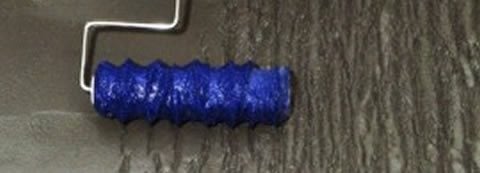 Vertical Overlay Texture Tools
by Butterfield Color
Vertical Overlay Texture Tools
by Butterfield Color
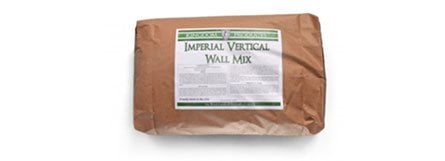 Vertical Wall Mix
40 lb Bag
Vertical Wall Mix
40 lb Bag
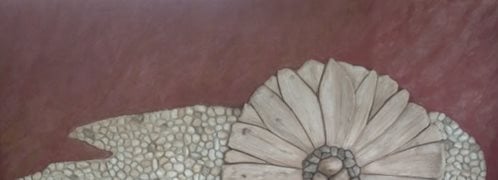 Brickform Vertical Mix
Great for Carving or Stamping
Brickform Vertical Mix
Great for Carving or Stamping
 Butterfield Cantera Wall Mix
Just Add Water
Butterfield Cantera Wall Mix
Just Add Water
VERTICAL CARVING TOOLS
What sets vertical stamping apart from traditional stamped concrete flatwork is the level of detail that can be achieved when accented by hand carving. Because vertical work is often at eye level, many installers will create intricate textures and detail not found on horizontal stamped concrete. To achieve this level of detail and realism, they often rely on three types of specialty carving tools:
- Textured hand trowel: This easy-to-handle handheld trowel features a textured back that gives texture to flat surfaces while also carving and cutting into the material.
- Three-way vertical jointer: Also known as “crow’s feet,” this unique tool is used specifically for vertical carving. Available in many sizes, these Y-shaped tools create realistic intersections where stones and rock come together. Using multiple sizes allows for variation and a nonrepeating pattern that adds to the realistic look of the project.
- Carving wedge: This tool is used to connect the three-way joints and is available in various sizes and thicknesses, depending on the type of stone or rock being emulated.
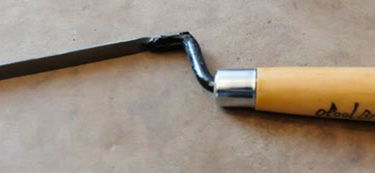
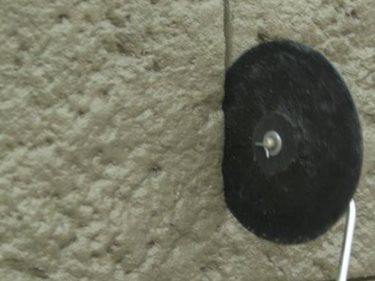 Hand carving tools like this one from Contractors Source help add realistic detail.
This tool from Butterfield Color is great for creating joints on a vertical surface.
Hand carving tools like this one from Contractors Source help add realistic detail.
This tool from Butterfield Color is great for creating joints on a vertical surface.
Features to look for
Giffin recommends that anyone performing carved vertical overlay work have a complete set of all three of these tools to allow for the most realistic outcome and a high degree of detail. When purchasing these special carving tools, also look for a tool that comes in multiple sizes and variations. The variation of the tools is critical, according to Giffin, because repeating patterns and similar sized stones and grout lines make the project look artificial. “In nature, there are no two stones that look the same and no wall that has the same makeup and layout.” Giffin also stresses the need to blend different sizes of three-way jointers on a wall to create different size stones and patterns. The same is true when purchasing the wedge tools. Different sizes and widths are critical to creating a natural and realistic look.
